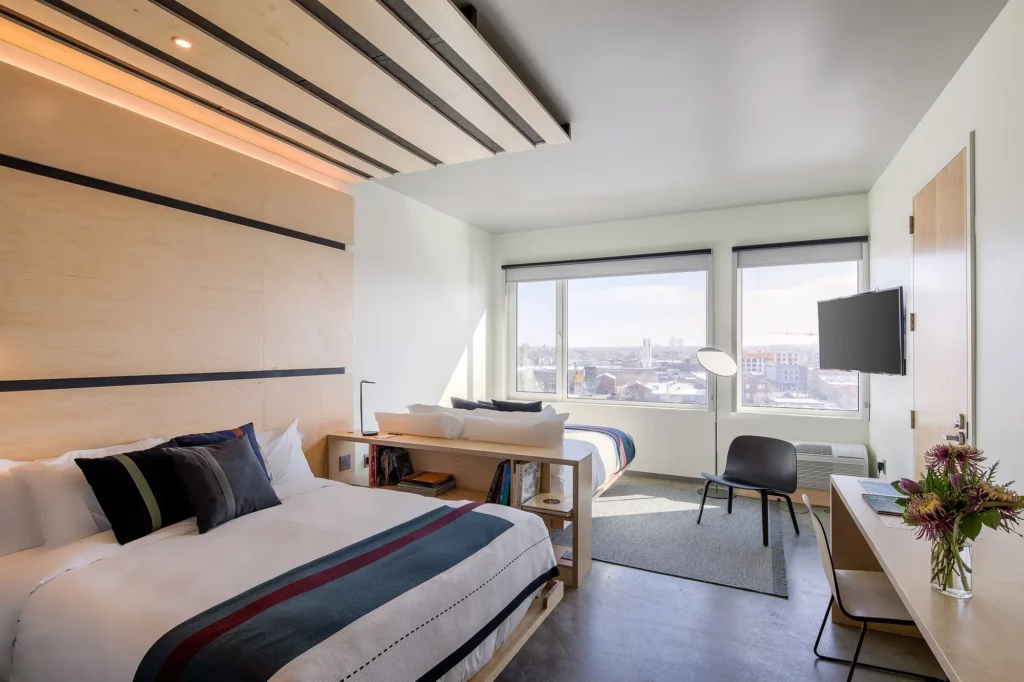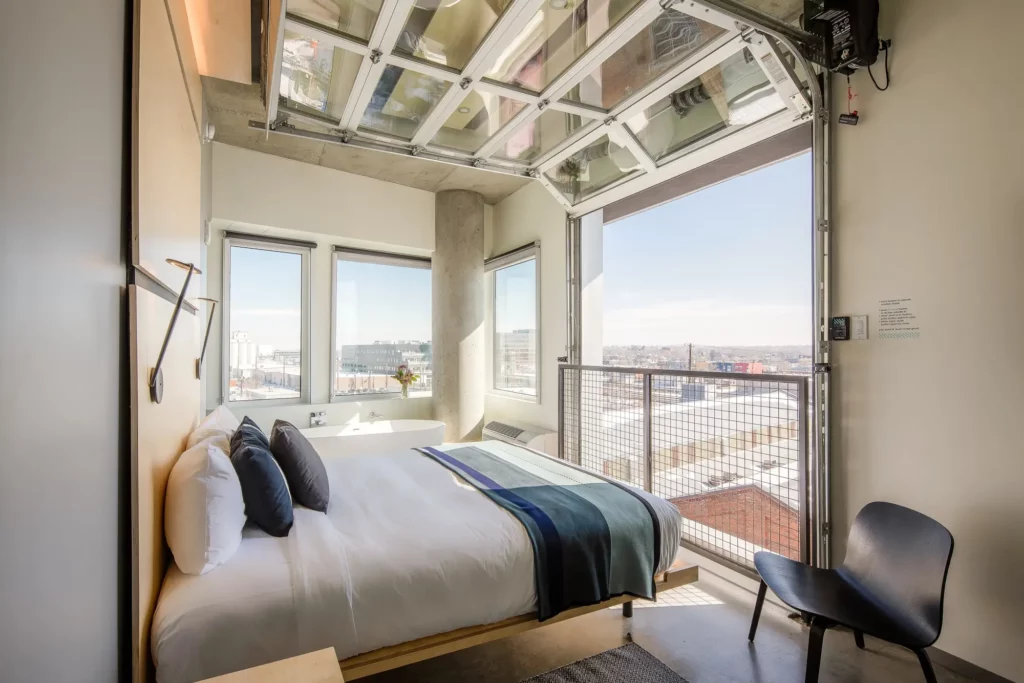
Denver, often referred to as the Mile High City due to its elevation of exactly one mile above sea level, is more than just a gateway to the majestic Rocky Mountains. It has emerged as a vibrant center for culture, art, and design. The local interior design scene thrives on a blend of historical influences and modern-day innovations. This delightful fusion is enriched by the city's eclectic neighborhoods, each offering its own distinct flavor and artistic flair. From the historic charm of LoDo (Lower Downtown) characterized by its Victorian and Edwardian-style buildings to the contemporary art installations in the Santa Fe Arts District, design professionals in Denver are constantly inspired. The city embraces both the rustic charm of its alpine environment and the sleek aesthetics of urban living, providing fertile ground for innovative design ideas.
Moreover, Denver's artistic community is bolstered by many local art galleries, museums, and annual events. The Denver Art Museum showcases a significant collection of Native American art, which not only reflects the history of the region but also sparks contemporary design inspirations. Events like the Denver Design Week bring together designers, architects, and enthusiasts for discussions and networking opportunities, fostering a community that thrives on creativity and collaboration. Such vibrant artistic expressions encourage interior designers to experiment and innovate, making it a breeding ground for new ideas that are both functional and aesthetically pleasing.
One of the most compelling aspects of interior design in Denver is the deep connection between indoor spaces and the stunning natural surroundings. The Rocky Mountains provide a breathtaking backdrop that informs the design language of many local professionals. Designers are increasingly incorporating natural elements into their work, creating spaces that blur the lines between indoors and outdoors. Large windows framing panoramic views of the mountains, the use of natural materials such as wood and stone, and palettes inspired by the region's seasonal changes are just a few examples of how nature plays a critical role in shaping interior aesthetics.
As sustainability becomes a cornerstone in the design ethos, many designers are looking to eco-friendly materials and practices that reflect the area's commitment to conservation and respect for nature. Denver, surrounded by parks and open spaces, encourages a lifestyle that embraces the outdoors, prompting interior designers to consider this lifestyle in their work. Adopting biophilic design principles—where natural elements are directly integrated into interior spaces—has become a prominent trend. Designers create interiors that don't just fill space but foster wellbeing and a sense of peace, exemplifying the beautiful intersection of natural inspiration and innovative design.
For aspiring interior designers, Denver presents a wide array of career opportunities across multiple sectors. The market for Denver interior design jobs is as varied as the city itself, with positions available in residential, commercial, and hospitality design. Showrooms are a vital part of this industry, serving as spaces where designers can display their portfolios, engage with clients, and stay updated on the latest trends in materials and furnishings. Building connections with manufacturers and suppliers in these showrooms often leads to collaborative work and valuable referrals, making them key components in a designer's career growth. Renowned brands like West Elm, and Restoration Hardware, and local gems like Mod Livin' offer not only platforms for creative expression but also excellent networking opportunities.
Additionally, Denver's rising prominence in the tech and start-up sectors has fueled demand for modern, well-designed office spaces. Businesses are investing in interior design to attract top talent, creating ample opportunities for commercial interior designers. The need for collaborative, innovative, and aesthetically pleasing work environments is on the rise, paving the way for creative solutions that transform traditional office layouts.
In the world of interior design, where relationships can mean the difference between a promising lead and a lost opportunity, networking is indispensable. Denver's interior design community thrives on collaboration, with professionals often sharing insights, resources, and opportunities. Joining organizations such as the American Society of Interior Designers (ASID) or local design groups can present numerous networking avenues. Participating in events, workshops, and competitions not only enhances skills but also cultivates connections that could lead to job offers or collaborations on projects.
Social media platforms like Instagram and Pinterest play an increasingly pivotal role in showcasing designs and connecting with potential clients and employers. A well-curated online presence can enhance visibility; many designers use these platforms to showcase their completed projects, exhibit their design philosophy, and share valuable tips that can resonate with both clients and fellow designers. Denver also hosts various design fairs and expos, providing fertile grounds for mingling with industry leaders and gaining insight into prospective job openings. The local environment encourages a synergistic culture where creativity thrives, making networking an essential tool for any designer looking to make their mark.
A compelling portfolio is the cornerstone of any successful interior designer’s career. In Denver’s competitive job market, a portfolio must not only showcase previous projects but also convey a unique narrative that reflects the designer's personal style, philosophy, and evolution. Potential employers and clients are looking for a distinct voice—one that stands out in a sea of talented professionals. It's crucial that designers select a diverse array of completed works that highlight their range, including residential spaces, commercial projects, and any specialized work such as sustainable or adaptive reuse designs. Moreover, including project descriptions that detail the design process, challenges faced, and outcomes achieved can enhance the narrative, demonstrating not only creativity but also problem-solving skills.
As the industry evolves towards a more holistic understanding of design, integrating customer feedback and collaborative design processes in portfolios is increasingly essential. Clients want to see how designers engage with individuals to create tailored spaces that resonate with their lifestyles. Expanding beyond just visual components, designers should look to include testimonies and reviews from previous clients, emphasizing their interpersonal skills and ability to manage projects seamlessly. As interior design continues to evolve, particularly in Denver, professionals must ensure their portfolios remain flexible, always incorporating new styles and methodologies to stay relevant in the industry.
To thrive in Denver's interior design industry, staying abreast of current trends and emerging technologies is essential. There has been a significant shift towards sustainable design practices, with increasing client demand for environmentally friendly materials, energy-efficient solutions, and responsible sourcing. Designers need to familiarize themselves with certifications such as LEED (Leadership in Energy and Environmental Design) and understand how to incorporate sustainable practices into their work without compromising aesthetics. Understanding the environmental impact of design choices not only aligns with Denver’s community values but also represents an ethical approach that resonates with a broad audience.
Additionally, the concept of smart homes has taken center stage in contemporary design, requiring designers to learn about technology integration, such as smart lighting, heating, and security systems. As clients increasingly seek convenience and security, being knowledgeable about these systems can set a designer apart in the marketplace. Another significant trend is the focus on mental well-being through design. Creating spaces that promote tranquility and reduce stress—whether through color palettes that invoke calmness, layouts that enhance flow, or natural elements that foster connection to the outdoors—has become paramount. Designers in Denver should be prepared to create environments that not only look stunning but also contribute to improved quality of life for their clients.

One of the most enriching aspects of the interior design community in Denver is the wealth of knowledge that can be gained from experienced professionals who have thrived in their careers. Conducting interviews with successful local designers can unveil valuable insights into their journey, inspirations, and the unique challenges they've faced. For instance, a designer who has transitioned from a commercial background to a thriving residential practice can provide key takeaways on navigating different sectors of the industry. Sharing their lessons learned can not only serve as inspiration for aspiring designers but also offer practical advice on honing skills, developing a distinct style, and building lasting client relationships.
Moreover, many veteran designers advocate for continuous learning and mentorship, emphasizing the importance of staying curious and open to collaboration. As they recount their experiences navigating Denver’s dynamic design landscape, these experts contribute significantly to the evolving conversation around interior design, shaping the next generation of professionals. Engaging with these industry leaders through podcasts, workshops, or local design panels can provide aspiring designers with the mentorship and encouragement they need to carve out their own paths in this competitive field.
Denver is home to numerous transformative interior design projects that have redefined spaces and the very fabric of the community. Examining case studies of landmark projects can provide critical learnings for aspiring designers. For example, the transformation of the historic Union Station into a vibrant hub of retail, dining, and hospitality showcases not only the importance of preserving historical integrity but also the potential for adaptive reuse of existing structures. Designers involved in this project faced the challenge of blending modern functionality with historic charm, resulting in a stunning outcome that respects the past while serving contemporary needs.
Another noteworthy project includes the design of the Source Hotel and Market Hall in the RiNo (River North) Art District, which reflects the creative spirit of Denver. The design integrates local artisan work, emphasizing community engagement and sustainable practices. Studying such projects reveals the critical role that interior design plays in shaping not just individual spaces, but also larger communities. By diving into these case studies, aspiring interior designers can draw inspiration, understand project complexities, and gain insight into the collaboration that brings visionary spaces to life.
In conclusion, the interior design industry in Denver is rich with opportunities and influence. For aspiring professionals looking to establish their careers, understanding the unique elements at play within this vibrant city is crucial. From the natural landscape that inspires design to the diverse job market and the latest trends that shape professional practices, Denver offers a captivating arena for creativity and innovation in interior design. Embracing these insights can empower designers to carve their paths and contribute to the ever-evolving tapestry of Denver's design landscape.
comments